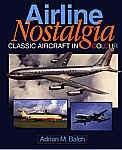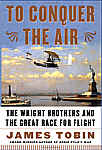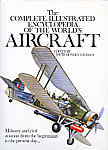

Early Airplanes
in KLM's West Indian Services

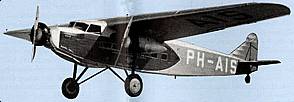
Fokker FXVIII Snip
Amsterdam-Curaçao 1934

Douglas DC-5
the forgotten Douglas
 |

|

|
| Lockheed L14 Electra |
Douglas DC-3 |
Douglas DC-4 |
 | ||
| Lockheed L749 Constellation the beloved Connie |
Fokker FVIIb-3m
In 1924 KLM opened the
East Indiaroute Amsterdam-Batavia with the first single engine FVII. KLM director Dr. Albert Plesman thought it might be preferable to have a plane that wouldn't just drop out of the sky when one engine failed, and he may have had a point. Admiral Byrd thought so, too, and Fokker agreed with them: To participate in the 1925 Ford contest, he cabled Amsterdam to hang two additional Wright Whirlwind engines under the high wings, creating the FVII-3m or Fokker Tri-Motor — the first tri-engine plane ever built.
This type flew in nearly every country and for nearly every larger airline of the world. It was the most popular aircraft of the time, and opened up the first long-distance routes. In 1925 it easily won the Ford reliability contest (the plane was plastered with Fokker's name all over). Henry and Edsel Ford acquired the winning plane for Commander Richard E. Byrd's north polar expedition; years later Ford produced a very similar aircraft, the Ford Tri-Motor. It was made of metal, though — the famous Tin Goose. However, being much heavier it had no more than just over half the Fokker's range (which caused Byrd much grief).
In Ernest K. Gann's Flying Circus he relates how, when Byrd visited the Ford factories and parked his Fokker in their hangar for one night, the Ford engineers recorded the form of the wing with soft copper tubing, foot by foot. It had been developed by chief designer Platz for the Fokker W.W.I fighter model D-VII. He wanted to make the wing stronger, without reinforcing cables. This resulted in a much thicker wing with more drag and, because of that, more lift; it therefore could be shortened again to get the same lift with less drag. This wing was used on all Fokker commercial aircraft until 1940.

Ford Tri-Motor:
noisy, heavy, slow, bone-rattling gas-guzzler
and ugly, too
Some FVIIb Records
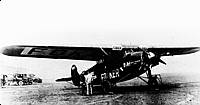
winner of the 1925 Ford competition
When you have had a look at the photos below, you'll understand why Fokker probably didn't think much more than twice about tripling his engine power. Looks more like cabinet-making than airplane-building, and gives that subtle hint as to why airplanes are still affectionately referred to as "crates". Lots of nicely varnished veneer, too. Another former Dutch aircraft manufacturer, Pander, for all I know still has a large furniture shop in the city of The Hague.
One U.S. built Fokker
Universal Standardsold for $17,500. While the wings were built in Holland and shipped to the USA, the American Fokkers were different designs by A. Francis Archer and Norbert Noorduyn, built by Fokker's USA plant, the Atlantic Aircraft Corporation. The Fokker Tri Motors finally lost their competitive edge in the USA because there was a crash when one of them carried famous football player Knuthe Rockne, and it was ruled this was caused by a failure of the wooden wing construction; ultimately, this was fixed in the F-XVIII where the wing was glued with Bakelite.
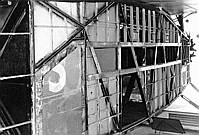
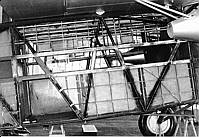
Southern Cross when covering fabric was replaced in 1967
Photographs copyright by Ron Cuskelly
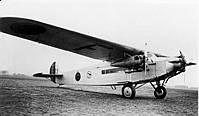
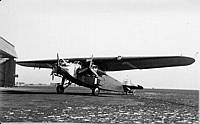
| Type |
Wingspan in m |
Length in m |
Passengers |
Engine type |
Engine power HP or Lbs |
First flight |
| FVII |
22.08 |
14.50 |
8 |
R.R. Eagle |
360 |
11 April 1924 |
| F.VIIa |
19.31 |
14.35 |
8 |
Bristol Jupiter VI |
450 |
12 March 1925 |
| F.VIIa-3m |
19.30 |
14.60 |
8 |
Wright Whirlwind |
3x240 |
4 September 1925 |
| F.VIIb-3m |
21.70 |
14.50 |
8-10 |
Wright Whirlwind |
3x300 |
1927 |
Eight years later, via a series of models in-between, the F-XVIII was developed from the F-VIIb.

If you wonder what that name stands for, uh, you're quite right... the dirty mind is not yours.
He himself once wrote his mother:
A good name is a good key!

Dutch names
and how they got to be that way.
model drawings available from Modelbouwers
some pictures from adastron
If you got this far
you'll love this one!

Blohm und Voss BV-141
the asymmetrical airplane
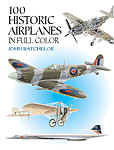
SEARCH this site or the Web

copyright notice
all material on this site, except where noted
copyright © by , curaçao
reproduction in any form for any purpose is prohibited
without prior consent in writing
